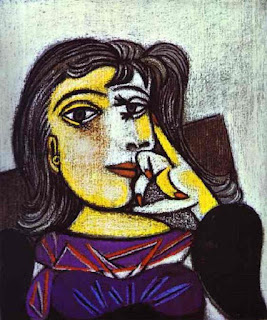The Chornel House

"The Chornel House" was made in 1945 by Pablo Picasso. This specific piece was also named the piece de resistance in the Tate exhibit. Picasso himself said that the work was affected by revelations of the real-life charnel houses of the holocaust. As the co-founder of the Cubist movement he made pieces of work for artists to be able to reconstruct their paintings into detailed thoughts and ideas. All on the viewers perception of shapes and metrics. I chose this painting because of the faces on the figures and them actually being tied or most of the eyes but one are closed. It doesn't feel like any type of home.






























